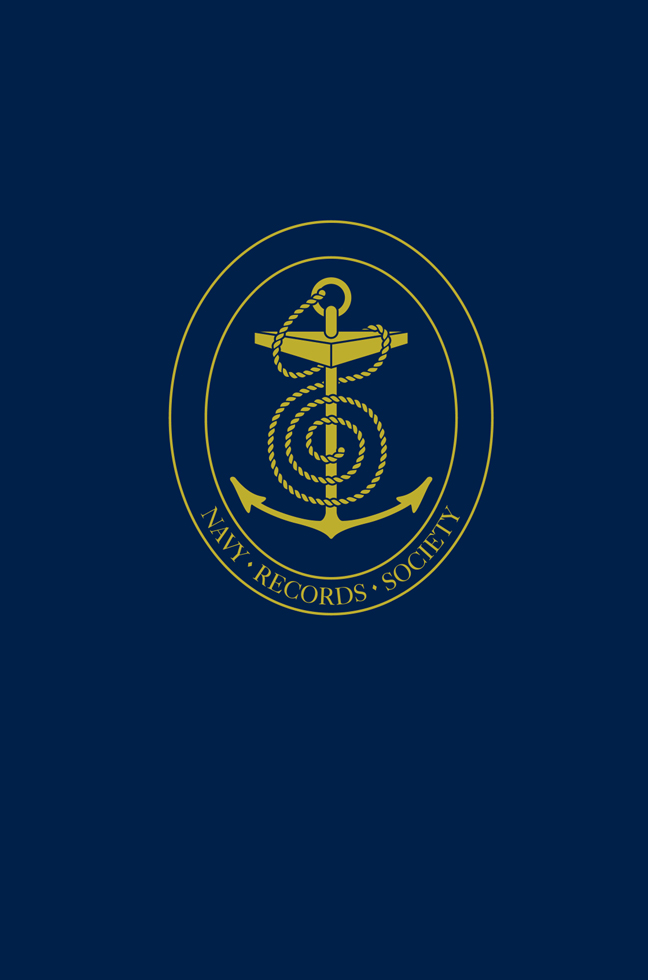Book contents
- Frontmatter
- Dedication
- Contents
- List of Plates
- Preface
- List of Abbreviations
- I The Provision of Ships for Edward I's Campaigns in Scotland, 1300–1306: Barges and Merchantmen
- II Lord Admiral Lisle and the Invasion of Scotland, 1544
- III The Journal of the Voyage of the Marigold to Iceland, 1654
- IV Neutrality, Sovereignty and Jurisdiction: Two Cases in the Admiralty Court, 1798–1805
- V The Supply of Timber for the Royal Navy, c.1803–c.1830
- VI The Journal of Lieutenant George Bedford, 1835–36: Surveying on the West Coast of Africa
- VII The Journal of Lieutenant Charles Knowles in the River Niger, 1864
- VIII The Diary of Signal Bosun Henry Eason: The Naval Brigade in the Zulu War, 1879
- IX The Autobiography of Chief Gunner Alexander Grant: HMS Lion at the Battle of Jutland, 1916
- X Australian Naval Defence: Selections from the Papers and Correspondence of Captain W. H. C. S. Thring, 1913–34
- XI The Relief of Admiral North from Gibraltar in 1940
- XII The Development of an Independent Navy for Australia: Correspondence between the First Naval Member and the First Sea Lord, 1947–59
- Contents of Previous Naval Miscellany Volumes
- Index
- Miscellaneous Endmatter
VI - The Journal of Lieutenant George Bedford, 1835–36: Surveying on the West Coast of Africa
Published online by Cambridge University Press: 05 March 2024
- Frontmatter
- Dedication
- Contents
- List of Plates
- Preface
- List of Abbreviations
- I The Provision of Ships for Edward I's Campaigns in Scotland, 1300–1306: Barges and Merchantmen
- II Lord Admiral Lisle and the Invasion of Scotland, 1544
- III The Journal of the Voyage of the Marigold to Iceland, 1654
- IV Neutrality, Sovereignty and Jurisdiction: Two Cases in the Admiralty Court, 1798–1805
- V The Supply of Timber for the Royal Navy, c.1803–c.1830
- VI The Journal of Lieutenant George Bedford, 1835–36: Surveying on the West Coast of Africa
- VII The Journal of Lieutenant Charles Knowles in the River Niger, 1864
- VIII The Diary of Signal Bosun Henry Eason: The Naval Brigade in the Zulu War, 1879
- IX The Autobiography of Chief Gunner Alexander Grant: HMS Lion at the Battle of Jutland, 1916
- X Australian Naval Defence: Selections from the Papers and Correspondence of Captain W. H. C. S. Thring, 1913–34
- XI The Relief of Admiral North from Gibraltar in 1940
- XII The Development of an Independent Navy for Australia: Correspondence between the First Naval Member and the First Sea Lord, 1947–59
- Contents of Previous Naval Miscellany Volumes
- Index
- Miscellaneous Endmatter
Summary
Amongst the recently catalogued manuscripts from the Admiralty Library collection are a series of ten personal journals kept by Vice Admiral George Augustus Bedford (1809–78) for the years between 1830 and 1860. Setting aside one break in the 1830s, these provide a continuous and remarkable record of nearly 30 years of Naval surveying. Bedford was a successful specialist officer who commanded surveying vessels for 20 years, was eventually appointed Assistant Hydrographer in 1863 and became Marine Advisor to the Board of Trade shortly afterwards. His career took place about as far from the quarter-deck of a flag-ship as was possible in the mid-nineteenth-century Navy; the last two decades of his sea-going service were spent in the cutter Sylvia surveying the west and northwest coasts of Ireland.
Bedford was serving in a Navy that was small in historic terms (it mustered just under 26,000 men when he took his first command), but it was a Navy which, under John Barrow, as Secretary to the Admiralty, and Frances Beaufort as Hydrographer, put real resources into exploration, surveying and associated scientific research. Beaufort's period as Hydrographer (1829–55) has been described as the ‘high noon’ of the Hydrographic Office, and it was one of remarkable achievement. Although office resources for chart production were initially small, Beaufort managed to increase these and to secure more vessels for the surveying service – including in 1841 the use of six paddle steam vessels, which helped revolutionise practice. These resources allowed comprehensive surveys to be made overseas and in home waters. These surveys produced real benefits; the number of new charts produced annually increased from 19 in 1830 to 130 in 1855, and details of revisions to existing printed charts were published from 1832 in ‘The Nautical magazine’, and from 1834 as ‘Notices to Mariners’. In 1823 charts had first been made available commercially to the rest of world, and in the year when Beaufort left office 140,000 copies from a series of 2,000 charts were sold or distributed to the fleet. Bedford never had a starring role, never took part in the high-profile exploration of the Arctic, but his methodical surveying is typical of the work which contributed to this expansion.
It is clear that as a young man Bedford was aware of the personal risk of specialising which tended to divert officers from conventional Naval practice.
- Type
- Chapter
- Information
- The Naval Miscellany , pp. 235 - 272Publisher: Boydell & BrewerFirst published in: 2024

